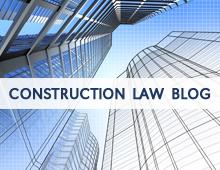In a recent decision, a New York appellate court reversed a trial court ruling that had granted summary judgment in favor of the plaintiff in a dispute over alleged diversion of trust funds under Article 3-A of the New York Lien Law. The case, 1 Park East Construction Corp. v. Uliano, underscores the evidentiary burden required for a plaintiff to establish a case of trust fund diversion for summary judgment.
The underlying dispute arose from a construction project in which the plaintiff alleged that a corporation owned by defendant, acting as a subcontractor, received trust funds from plaintiff to purchase materials for the installation of a stormwater filtration system but failed to pay the vendor. The plaintiff sought recovery of trust funds pursuant to N.Y. Lien Law Article 3-A. Initially, the trial court denied the plaintiff’s motion for summary judgment without prejudice, allowing for renewal once issue had been joined. The plaintiff subsequently renewed its motion, which the trial court granted, awarding damages in the principal sum of $78,066.62 against the defendant. The defendant appealed, leading to the reversal of the trial court’s decision.
The Appellate Division, Second Department, found that the plaintiff had failed to establish, as a matter of law, that the defendant had diverted trust funds. Under Article 3-A of the Lien Law, contractors and subcontractors who receive payments for construction projects hold those funds in trust for the benefit of subcontractors, suppliers, and other designated beneficiaries. Any unauthorized use of these funds before all trust claims have been satisfied constitutes an impermissible diversion, regardless of intent. However, the court emphasized that a plaintiff moving for summary judgment must eliminate all triable issues of fact regarding whether the trust assets were improperly used for unauthorized expenditures.
In this case, while it was undisputed that the defendant had received trust assets and had not paid the vendor, the plaintiff failed to show that the defendant had used the funds for unauthorized purposes. The court cited precedents emphasizing that summary judgment is inappropriate where factual questions remain unresolved, particularly in cases involving allegations of improper use of trust assets.
This decision serves as a reminder that plaintiffs seeking summary judgment on claims of trust fund diversion must present undisputed evidence that the defendant misused trust assets in violation of Lien Law § 71. Mere nonpayment to a vendor, without additional proof of improper diversion, is insufficient to grant summary judgment. The ruling confirms that summary judgment is inappropriate when factual disputes exist, leaving such issues to be resolved at trial.
Notably, however, the opinion fails to address how the plaintiff acquired standing to assert a trust fund diversion claim. Under the trust fund provisions of the Lien Law, only those who are beneficiaries—that is, those entitled to receive payment from the trust—generally have standing. In this case, the opinion states that the plaintiff paid trust funds to defendant’s corporation, a fact that typically indicates the plaintiff was merely the payer rather than a beneficiary. The sole exception in the statute is found in Lien Law § 71‑a(4)(a), which provides that under a home improvement contract, payments received from an owner by a home improvement contractor prior to substantial completion may be considered trust funds, thereby designating the owner as the beneficiary. Unfortunately, the decision does not address whether the dispute involves a home improvement contract, nor does it clarify the plaintiff’s actual role in the construction project, leaving its standing under the trust fund diversion claim uncertain.
Jose A. Aquino (@JoseAquinoEsq on X) is a special counsel in the New York office of Duane Morris LLP, where he is a member of the Construction Group and of the Cuba Business Group. Mr. Aquino focuses his practice on construction law, lien law and government procurement law. This blog is prepared and published for informational purposes only and should not be construed as legal advice. The views expressed in this blog are those of the author and do not necessarily reflect the views of the author’s law firm or its individual attorneys.



